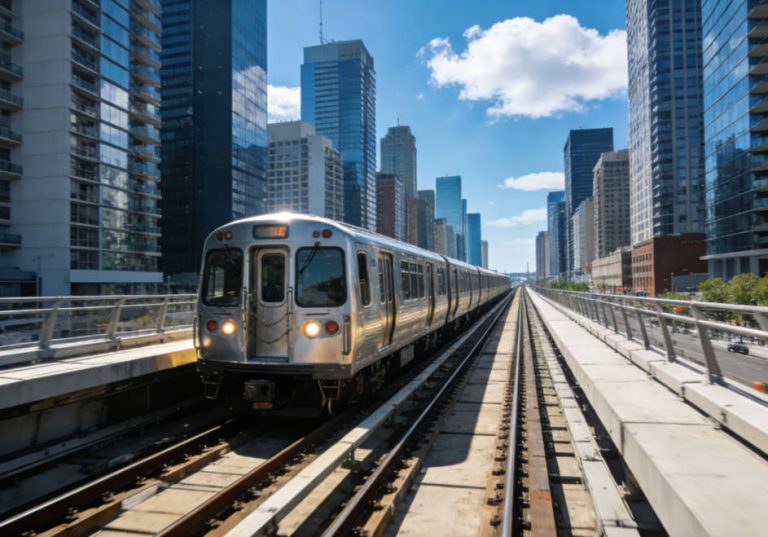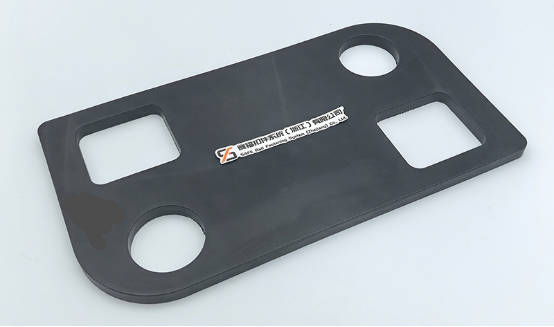Rubber pads play a role in modern railway systems by being integrated with sleepers on rail tracks to improve performance and safety for train operations. Industry professionals need to grasp the significance of these pads as transportation efficiency and demand, for passenger and freight services continue to rise. This piece explores the importance of rubber pads, in sleepers – their functions and how they affect the performance and safety of tracks by reducing vibration and noise while enhancing track durability and longevity.
Significance of Rubber Pads with Sleepers in Rail Tracks
Rubber pads play a role in the functionality of railway systems by providing a protective barrier between the rail and sleeper components to absorb shocks and minimize stress on the infrastructure elements below them. This vital function helps prevent wear and damage over time resulting in effective maintenance strategies and cost savings. Additionally, their ability to adjust and conform supports track alignment, essential, for seamless train operations.
Using top-notch rubber pads like the ones offered by SAFE products can significantly improve the effectiveness of railway systems! SAFE is known for its cutting-edge solutions customized for railway use to boost performance and meet safety regulations seamlessly! With state-of-the-art materials and techniques, at play; SAFE rubber pads bring durability and flexibility to today’s rail networks.

Functionality and Mechanics
The reason rubber pads work with sleepers is because of how they handle forces when trains go over the tracks – they absorb shocks. Spread out the load to protect against damage, in specific areas. Their special design boosts the track systems’ ability to carry loads safely during busy traffic times.
Furthermore, rubber pads play a role in preserving the structural stability of the railway track. By offering alignment and support these pads help maintain the tracks’ integrity, which is essential for ensuring train safety at high velocities. The use of rubber pads guarantees that railway infrastructures can withstand the ongoing operational strains while reducing the need, for frequent maintenance checks.
Impact on Track Performance and Safety
The integration of rubber pads with sleepers extends beyond mechanical functionality and heavily influences the performance and safety of railways. Rail tracks are subjected to various vibrations due to train movements, which can adversely affect operational performance and overall rider comfort. Rubber pads are designed to mitigate these effects, ensuring a smoother ride for passengers and reducing wear on the track infrastructure.
Vibration and Noise Reduction
One of the most crucial functions of rubber pads is their ability to reduce vibration and noise generated during train operations. The elasticity of rubber allows these pads to absorb and dampen vibrations that naturally occur as trains travel over the tracks. By minimizing vibrations, the pads also diminish noise pollution, creating a more pleasant travel experience for passengers and reducing disruption to surrounding environments.
Furthermore, the reduction of vibrations positively impacts the longevity of tracks and surrounding structures. Excessive vibrations can lead to deformation and deterioration of track components, which increases maintenance requirements and costs. By utilizing high-quality rubber pads, such as those manufactured by SAFE, the railway industry can achieve optimal vibration isolation, thus prolonging the life cycle of rail infrastructure.
Enhanced Durability and Longevity of Tracks
The durability of rubber pads has a direct influence on the longevity of the rail tracks they support. Quality rubber pads resist wear and aging, maintaining their functional properties over extended periods of use. By preventing track deformation and reducing fatigue on structural elements, these pads contribute to extended maintenance intervals and improve the overall robustness of the railway system.
In addition, SAFE rubber pads are engineered to withstand a wide range of environmental conditions, ensuring reliability and performance in diverse climates. The advanced materials used in their construction provide resistance to degradation from moisture, temperature fluctuations, and chemical exposure, contributing to a longer service life. This durability is an essential attribute for modern rail systems that require consistent performance under increasing operational demands.
In conclusion, the role of rubber pads with sleepers in rail tracks is integral to the safe, efficient, and sustainable operation of railway systems. By understanding their significance, functionality, and the positive impact they have on-track performance, experts in the field can make informed choices that align with modern requirements. Utilizing innovative solutions like those offered by SAFE will not only enhance rail infrastructure but also drive forward the evolution of the railway industry towards greater reliability and efficiency.
Integration with SAFE Products
Compatibility with SAFE’s Product Line
Rubber pads from SAFE are specifically designed to provide optimal integration with existing rail infrastructure. The extensive range of SAFE products ensures compatibility with various types of sleepers and rail configurations, allowing for seamless integration into both new and retrofitted railway systems. SAFE rubber pads are engineered with advanced materials that complement the mechanical properties of both wooden and concrete sleepers, enhancing overall track performance. This compatibility not only streamlines installation processes but also ensures that railway operators can benefit from upgraded solutions without the need for comprehensive system overhauls.
Advantages Of Conventional Solutions
Utilizing SAFE rubber pads presents numerous advantages compared to traditional support solutions. One significant benefit is the advanced vibration-dampening capabilities incorporated into the design of SAFE products. Unlike conventional pads, which may offer limited performance, SAFE pads employ a specialized composite structure that provides superior energy absorption, effectively mitigating vibrations and enhancing passenger comfort.
Furthermore, the durability of SAFE rubber pads significantly outshines typical offerings in the market. Constructed with high-resilience materials, these pads are less prone to wear and can withstand environmental variations, ensuring long-term performance in diverse climatic conditions. This durability translates into fewer disruptions for maintenance, ultimately leading to cost savings for railway operators.
The operational efficiency achieved through the use of SAFE rubber pads is complemented by their ease of installation. Designed for quick and straightforward deployment, these pads reduce installation time, minimizing disruptions to regular service and allowing for continuous operations. In an industry where downtime can be costly, enhanced installation techniques associated with SAFE products further establish them as a preferred choice among expert railway professionals.
In summary, the integration of rubber pads with sleepers, particularly those offered by SAFE, represents a strategic advancement in railway technology. You can also make customized requests to them based on your needs. The compatibility with existing systems, superior performance over conventional solutions, and operational efficiencies provided by SAFE products substantiate their critical role in enhancing modern railway infrastructure.

Economic and Environmental Benefits
Cost-Efficiency Analysis
Rubber pads integrated into rail systems play a role in improving the cost-effectiveness of railway operations by reducing vibrations and shocks that can cause wear and tear on infrastructure elementsleading to lower maintenance expensesand extending the lifespan of track materialsresulting in fewer replacements over, timethus enhancing overall cost efficiency significantly.
Additionally, the improved efficiency of train systems fitted with high-quality rubber pads results in operational speeds and dependability. The flexibility of rubber pads enables alignment potentially allowing railway businesses to enhance their service frequency and ultimately boost revenue generation. Moreover by minimizing noise and vibrations that often disturb residents the integration of rubber pads demonstrates a commitment to social responsibility, which could help strengthen relationships, with various stakeholders.
Sustainability Considerations
The positive impacts on the environment that result from combining rubber pads with sleepers go beyond financial advantages in the short term. Rubber pads can be made from recycled materials which helps to support an economy in the railway sector. Companies that adopt sourcing methods can greatly reduce their carbon footprint linked to material manufacturing, which in turn leads to more environmentally friendly practices, across the board.
In summary, it is evident that incorporating rubber pads with sleepers, in rail tracks offers both environmental advantages. By implementing these solutions railway companies can save money. Promote environmental sustainability. Using top-notch rubber pads, like those offered by SAFE enhances these benefits by offering cutting-edge designs that meet performance standards and environmental considerations.




